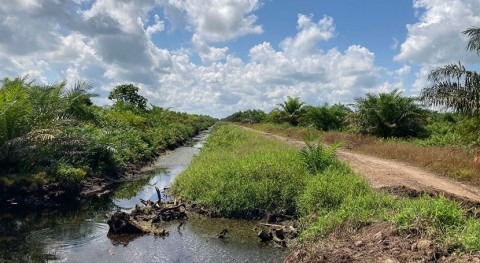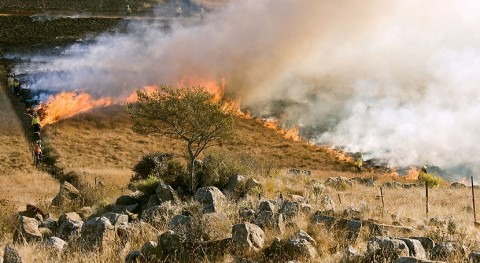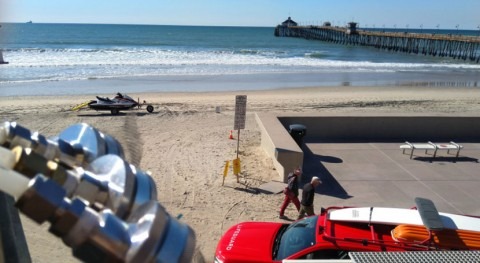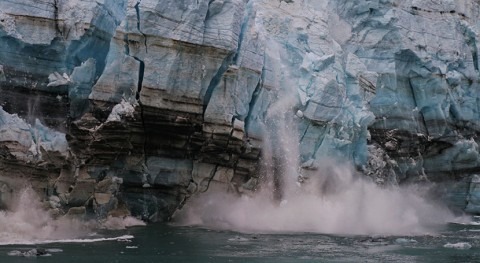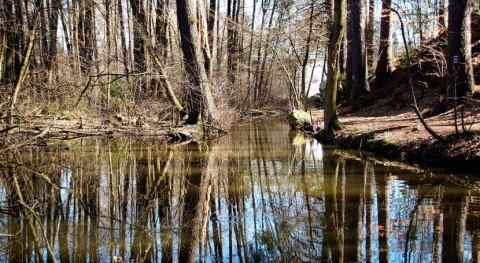A one-two punch of precipitation resulted in damage to Oroville Dam's main and emergency spillways pushing the second largest dam in California into a crisis in February 2017. Researchers from Scripps Institution of Oceanography at UC San Diego and colleagues say in a new study that they have identified the fingerprint of climate change in the events that triggered the incident. Issues with the dam's spillways led to the evacuation of 188,000 people who lived in the floodplain of the Feather River some 70 miles north of Sacramento, Calif.
Though officials narrowly averted a sudden release of water from behind the emergency spillway holding back the top-most portion of California's second largest reservoir, the incident demonstrates how difficult it is to balance water supply needs served by full dams with public safety that requires retaining sufficient empty space to capture floodwater. The consensus in climate science is that precipitation will become less frequent but more intense, increasing California's hydroclimate instability.
"We expect atmospheric rivers (ARs) to become more potent in a warming climate. We had previously assessed ARs and their evolving contribution to hydroclimate change over western North America. It was done in global climate model projections," said study co-author Alexander Gershunov, a climate scientist at Scripps Oceanography, "but this is the first study that quantified the influence of global warming on a specific, real, recent, and impactful atmospheric river event."
We expect atmospheric rivers (ARs) to become more potent in a warming climate
Researchers noted that in summer 2021, Oroville Lake's record low level prevented hydropower generation for the first time since the dam opened in 1968.
"Climate projections for California and the U.S. West Coast suggest fewer, yet more intense, precipitation events in the future," said study lead author Allison Michaelis, an assistant professor of meteorology at Northern Illinois University. "Such changes to the hydroclimate naturally come with heightened risks of both drought and flooding and potential for infrastructure damage."
The research taps into increasing knowledge of the weather phenomenon known as atmospheric rivers, which are potent flows of water vapor that provide California with up to half its annual water supply and account for more than 90 percent of the state's flood damages. Scripps Oceanography scientists at the Center for Western Weather and Water Extremes (CW3E) have led much of the work on atmospheric rivers, including the creation of the AR Scale. The scale categorizes atmospheric river storms in a spectrum between beneficial replenishing precipitation events and deluges that can cause widespread flooding.
Previous research led by Scripps Oceanography has suggested that as the climate continues to warm, the state and much of the rest of the West Coast will grow increasingly dependent on atmospheric rivers for their water supply making accurate prediction of these storms increasingly important. CW3E scientists are working to improve their ability to predict where and when atmospheric rivers will make landfall and how much rain, snow and runoff they will produce.
The California Department of Water Resources (DWR) AR Program, and the U.S. Bureau of Reclamation funded the new study, which appears in the American Geophysical Union journal Earth's Future.
"The potential impacts of atmospheric rivers on water storage facilities were made clear by the 2017 Oroville Dam spillways incident," said DWR Director Karla Nemeth. "DWR has been working with partners like CW3E and others to enhance tools to better forecast, prepare for, and manage climate change-induced extreme conditions that impact California's water supply operations."
On Feb. 6, 2017, an atmospheric river storm made landfall in Northern California. An initial pulse of relatively cold precipitation dumped snow on an already unusually large snowpack. This was followed a couple of days later by a warm pulse that poured rain on top of the snow. While the second pulse produced a comparable amount of precipitation, it had the effect of melting the snow on the ground, contributing to the boost of inflow that the Oroville Dam had trouble containing.
Researchers led by Michaelis, previously a postdoctoral research scholar at CW3E, modeled the February 2017 event. The simulation indicated that human-induced warming caused an 11-percent increase in precipitation during the first pulse and a 15-percent increase in the second pulse. When the warming projected to take place was assessed, the researchers found that by the late 21st century, precipitation in the second pulse would have been enhanced by nearly 60 percent.
The first pulse, however, did not see as much of an increase in a much warmer climate. That two components of one atmospheric river event behave so differently in simulations suggests that although warmer air can hold more moisture making ARs more potent, not all ARs are similarly enhanced by warming, complicating weather prediction.
"We were surprised to see such different responses from the two pulses of this storm," Michaelis said. "The different relationships between warming temperatures and precipitation increases opens up interesting research questions that we're excited to explore with a larger sample of cases."
Besides Michaelis and Gershunov, study authors include Tamara Shulgina and F. Martin Ralph of Scripps Oceanography, Scripps alumna Meredith Fish, and Alexander Weyant, who contributed most of the data analysis to the study while an undergraduate math major at UC San Diego. Weyant has since joined Scripps Oceanography as a first-year Ph.D. student.
"I believe most students studying statistics in the math department would find it very exciting to join the research effort on weather events in the background of a nonstationary climate," said Weyant. "They need only be made aware of this puzzling problem, which straddles the divide between structure and randomness, as well as that of short and long timescales."




